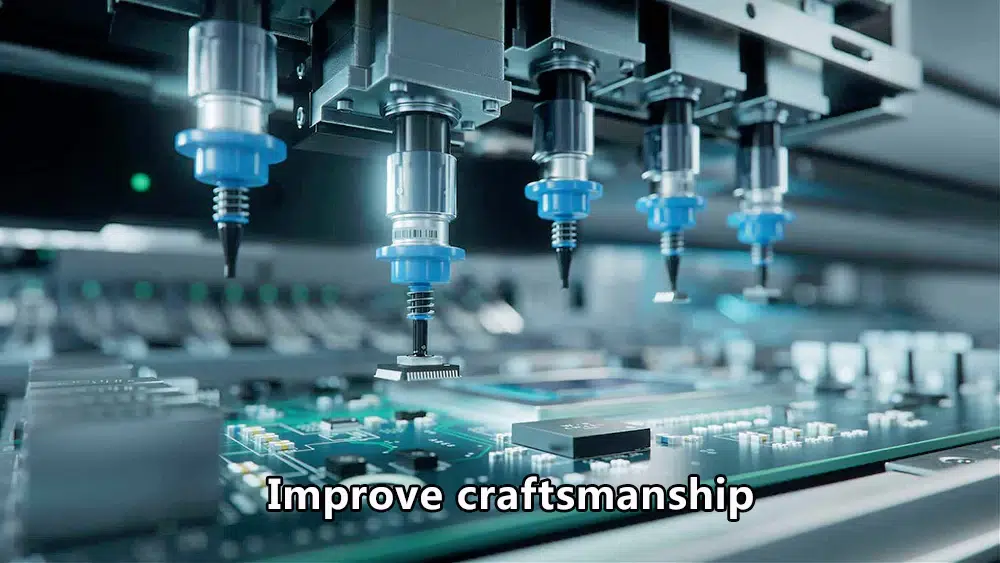Artificial intelligence is quickly becoming one of the most versatile and useful tools available to manufacturers. The use of artificial intelligence in chip design is gaining momentum as electronics manufacturers face growing demand and supply chain pressures.
Chip designers face the daunting task of delivering ever-increasing functionality while shrinking size while managing production and eventual cost. Artificial intelligence, which is good at analyzing and balancing multiple complex factors, is an ideal solution. Here are 5 ways manufacturers can use AI to optimize chip designs.
Accelerate chip design cycle
Improving efficiency is one of the biggest advantages of artificial intelligence in chip design. Optimizing a chip’s design means calculating and balancing thousands of possibilities, from materials to component layouts to node types. For engineers, the process is slow and laborious, but AI models can weigh these factors and find the ideal balance in a fraction of the time.
The AI can generate the ideal chip floor plan in less than six hours, whereas it would take a human research team months to achieve the same results.
Thus, manufacturers can significantly reduce lead times by simplifying the initial design phase. They can bring new chips to market faster, resulting in a better return on investment.

Reduce manufacturing cost
Using AI in chip design could also allow manufacturers to produce components at a lower cost. Most of these savings come from the speed of AI. As development time is reduced from months to weeks or even days, manufacturers spend far less on labor and machinery costs throughout the production life cycle.
This flexibility also allows manufacturers to take advantage of more cost-effective chip technologies. Application-specific integrated circuits (ASICs) are less expensive to produce than more traditional general-purpose chips, but have higher initial engineering expenses. However, if chipmakers use AI to simplify early development, ASICs are a more viable option, allowing them to maximize cost-effectiveness.
AI can also consider cost-effectiveness when designing chips. Smart models can take material cost and complexity into account when comparing design possibilities, providing manufacturers with options that are less expensive to produce. In theory, human experts could also find these possibilities, but it would take longer and be less reliable.
Improve chip performance
Performance is another key consideration in chip design. Demand for device functionality is on the rise, but supporting high-end features while maintaining reasonable cost is often a challenge for engineers. Because AI can compare thousands of parameters faster than humans, it can better manage these complex considerations.
In addition, using AI-assisted design software allows manufacturers to discover design choices that could improve chip performance that they might otherwise miss.
As manufacturers use machine learning in more chip designs, the algorithms will collect more real-world data, becoming more effective over time. As a result, wider adoption of AI will lead to continuous, if not exponential, improvements in chip design.
Improve craftsmanship

AI in chip design can also be applied to processes beyond the design phase. Predictive models can use designs and data about a manufacturing facility’s production lines to analyze what the manufacturing process will look like. They can then recommend design or workflow adjustments to make the product easier to produce.
Some chip designs may look ideal on paper, but in practice introduce too many production complications. A prototype may require five-axis machining, but this requires specially trained operators, increasing the risk of human error. AI can notice this risk and then suggest alternative designs that manufacturers can make using simpler methods.
These factors are easily overlooked for humans, but have far-reaching consequences. AI-guided design helps electronics companies address these manufacturing issues to minimize lead times and production costs on production lines.
Alleviate talent shortage
As demand for electronics increases, many companies find themselves facing a shortage of skilled talent. Applying artificial intelligence to chip design could close those gaps by allowing smaller teams to get more done in less time.
As AI greatly simplifies the design process, it frees up workers for other tasks. Likewise, the automation of more processes means that less skilled and experienced employees can still perform chip design duties. Therefore, the technical talent gap will not affect the company too much.
Conclusion
Artificial intelligence in chip design is a relatively new but increasingly valuable solution. These automated tools are critical to staying competitive in the industry. Applying AI to address these five areas will ensure electronics manufacturers adapt to the growing challenges.










